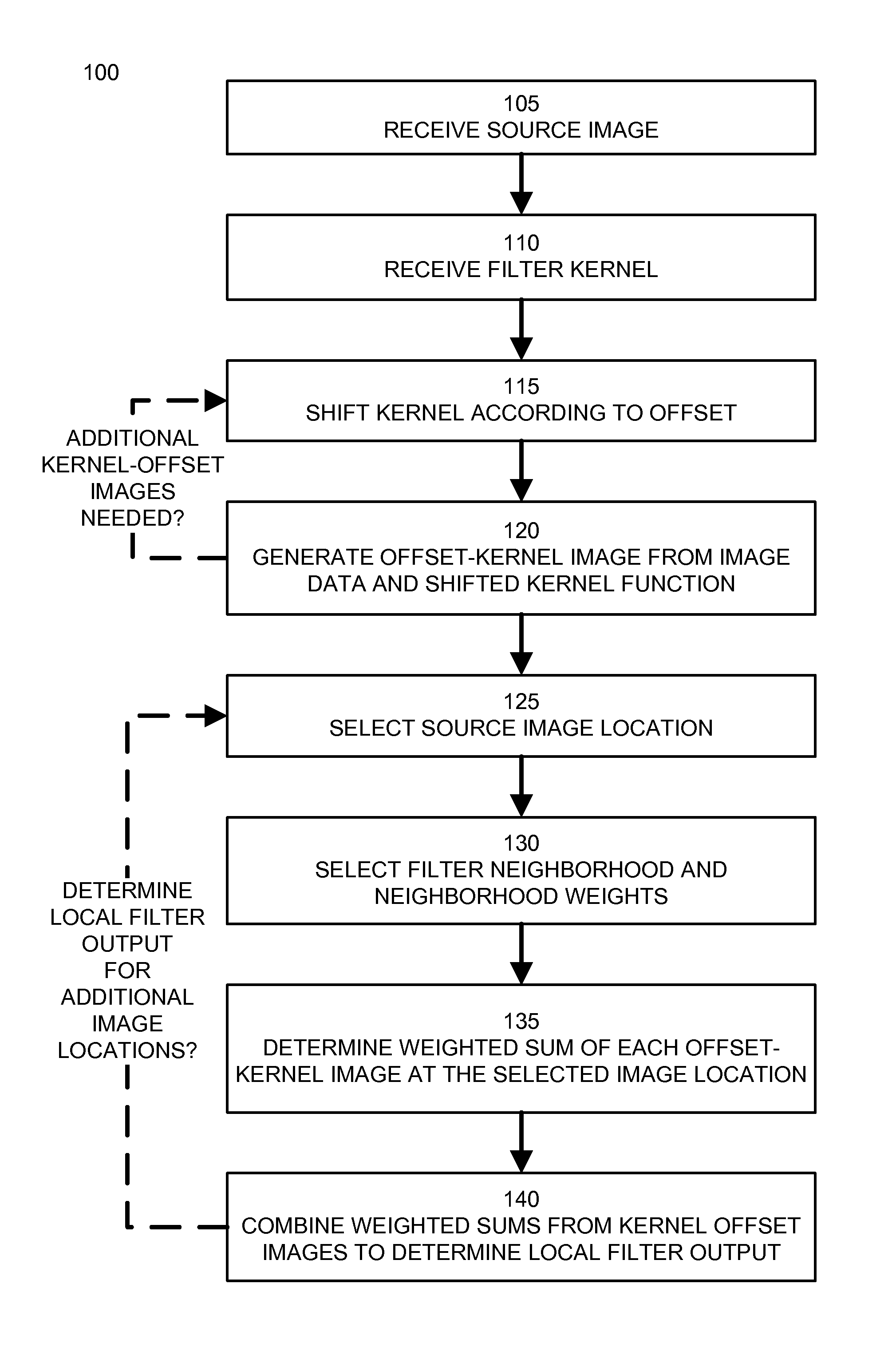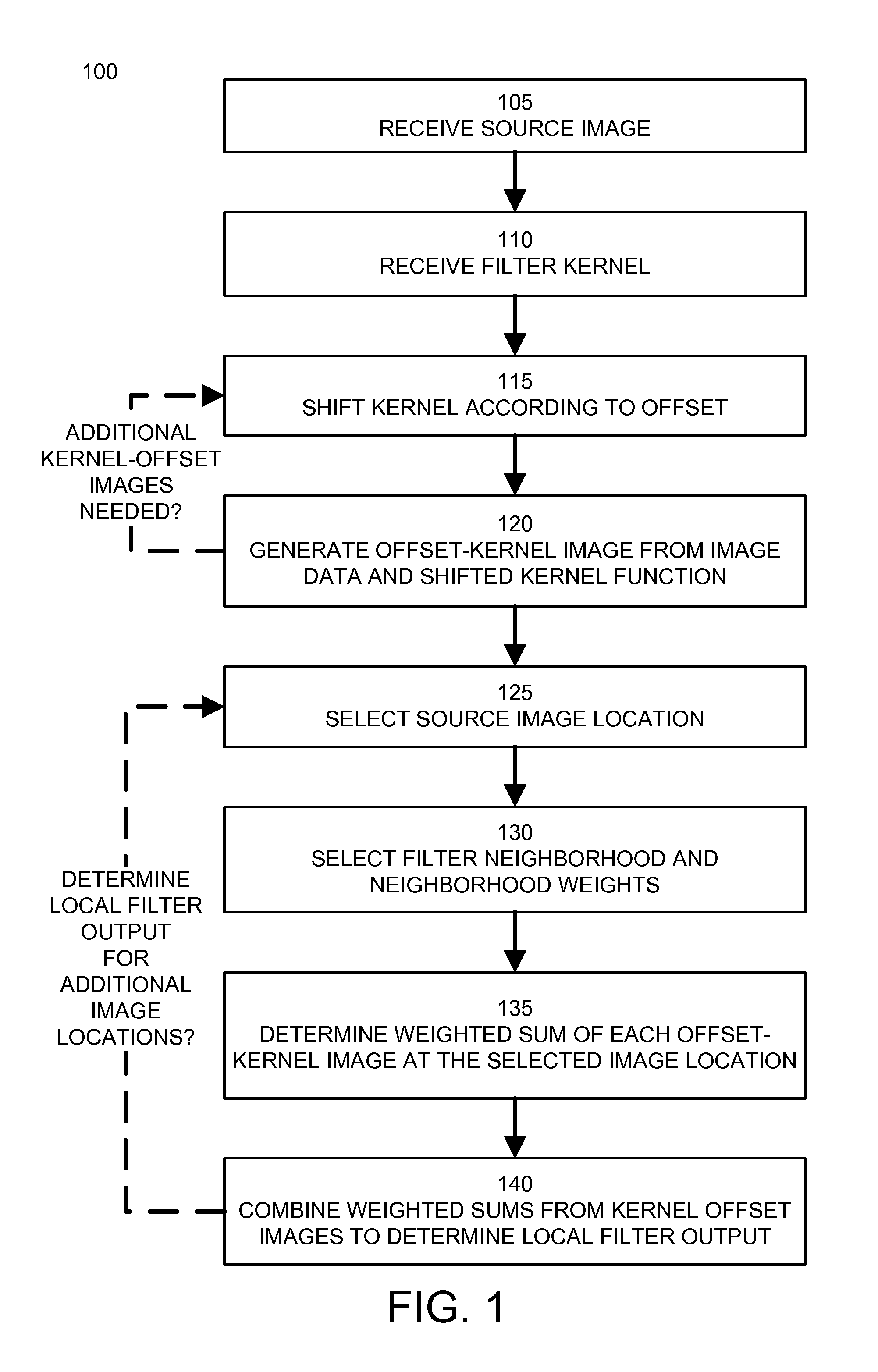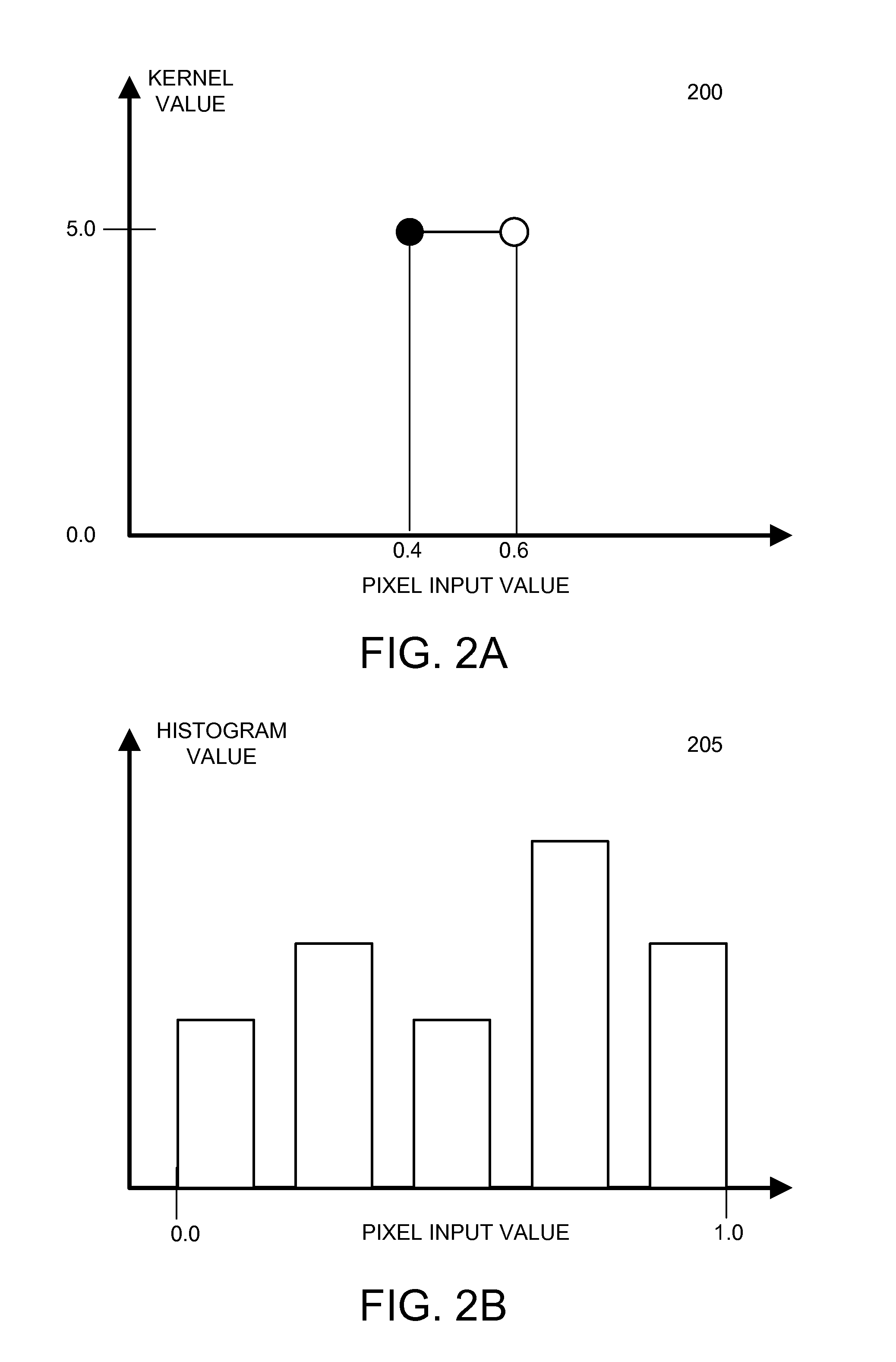Selective diffusion of filtered edges in images
a filtering edge and image technology, applied in image enhancement, image analysis, instruments, etc., can solve the problems of poor signal processing characteristics of square or rectangular neighborhoods, high computational cost of prior techniques for determining a local histogram, and often exhibit clear visual artifacts. achieve the effect of higher level of detail
- Summary
- Abstract
- Description
- Claims
- Application Information
AI Technical Summary
Benefits of technology
Problems solved by technology
Method used
Image
Examples
Embodiment Construction
Histogram Properties
[0023]The traditional histogram sorts data into a collection of bins, indicating the frequency with which the data falls into each bin. While this is convenient for exploratory data analysis, the discrete quantization of data into bins is artificial. From a signal processing point of view, embodiments of the invention examine a smoothed histogram. If Ip is the image intensity at a point p, then the smoothed histogram of a neighborhood around the point can be written
fp(s)=1n∑i=1nK(s-Iqi)(1)
where K is a smoothing kernel that integrates to one, n is the number of points in the neighborhood, and qi ranges over the pixels in the neighborhood of p. Note that if K is a unit-area box function and f(s) is sampled appropriately, this reduces to the traditional binned histogram.
[0024]Equation 1 has another important interpretation. If the pixel intensity values are considered to be samples from a random variable, then f is a popular estimate of the underlying probability de...
PUM
 Login to View More
Login to View More Abstract
Description
Claims
Application Information
 Login to View More
Login to View More - R&D
- Intellectual Property
- Life Sciences
- Materials
- Tech Scout
- Unparalleled Data Quality
- Higher Quality Content
- 60% Fewer Hallucinations
Browse by: Latest US Patents, China's latest patents, Technical Efficacy Thesaurus, Application Domain, Technology Topic, Popular Technical Reports.
© 2025 PatSnap. All rights reserved.Legal|Privacy policy|Modern Slavery Act Transparency Statement|Sitemap|About US| Contact US: help@patsnap.com



